If you want a deck that is reminiscent of the early days of Hearthstone while still taking advantage of exciting new cards, Midrange Paladin fits the bill. The deck became a powerhouse on ladder soon after the first full expansion, Goblins vs. Gnomes. With the ability to consistently play high-value minions for the first eight turns of the game, Midrange Paladin had a way of dissecting an opponent’s board presence with relative ease. 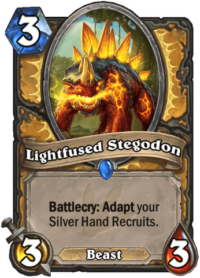
With the Grand Tournament expansion, Mysterious Challenger shifted the focus to a more Secret-oriented build–much to the chagrin of a large portion of the player base. The playstyle and win-condition of the deck remained largely the same, however: grind out your opponent by playing the best minion on curved, turn after turn.
More recently, Midrange Paladin received several tools from the Journey to Un’goro expansion. New cards that generate (Lost in the Jungle) and synergize (Lightfused Stegodon) with the Paladin’s Silver Hand Recruits were introduced. These complemented existing options, such as Muster for Battle and Quartermaster. As a result, Recruit (or Dude) Paladin was born, propelling Midrange Paladin to the top of Wild tier lists.
Update – Midrange Recruit Paladin August 2017, Season 41
Not many changes to most decks right now. With Knights of the Frozen Throne on the way we’re just waiting to see how decks shape up when it’s released.
Wild Midrange Recruit Paladin Variants
Powerful, early-turn curve cards such as Shielded Minibot and Muster for Battle, create a flexible shell for deck builders and offer a handful of different variations of the Midrange Recruit Paladin archetype. Four common variants are outlined below, all of which are viable options in the current meta.
Vanilla Midrange Recruit Paladin
The basic version of this Midrange Recruit Paladin, which is the main exemplar of this guide, focuses heavily on the Silver Hand Recruit synergies. It fills in the rest of the deck with high-value Paladin class cards and Legendary minions.
Curator Midrange Recruit Paladin
Some players prefer to take advantage of The Curator to consistently draw menagerie minions, such as Hydrologist, Lightfused Stegodon, and Primordial Drake. Each of these falls in line with the deck’s goal of playing quality minions on curve and the addition of these tools provides a powerful card draw engine that the deck is otherwise lacking.
Awedragon’s Anyfin Recruit Paladin
With a more creative take on the archetype, Awedragon climbed to Rank 1 Legend on North America in Season 39. His hybrid list couples early recruit generation and synergy cards with the Anyfin Can Happen package performing as a surprise finisher. Once again The Curator (in this instance paired with Finja, the Flying Star) tutors for minions, thins the deck, and improves draws in the late game.
N’zoth Midrange Recruit Paladin
As is often the case with many Wild decks, you could do well to cram N'Zoth, The Corruptor (along with the multitude of valuable Deathrattle minions available in the format) into the deck. Recruit Paladin is no different and, while the deck probably has enough sustainability to outlast greedy decks already, but bringing back a Tirion Fordring (or two) with some Sludge Belchers should seal just about any game.
Wild Midrange Recruit Paladin Mulligan Strategy & Guide
The mulligan section will be divided into two parts: against fast decks and against slow decks. Fast decks are generally Aggro decks (e.g. Pirate Warrior) or high tempo Midrange decks (e.g. Midrange Hunter). Slow decks are slower Midrange and Control decks.
As a curve-centric deck, it excels when you play the most expensive card you have the requisite mana for each. That’s not to say critical decisions won’t be made, but the some of most influential decisions for this style of deck are made during the Mulligan phase. Remember to take the time to consider the cards in hand and map out turns accordingly.
Moreover, the variety of archetypes for each class in Wild makes the mulligan phase a bit of a challenge. If you’re unsure about what deck your opponent is playing, operate under the assumption that it’s the fastest variant for the class. You can always draw into the cards you need against slower decks. Contrarily, if you mulligan for the slow variant, you’re likely to end up dead very quickly if you have guessed wrong.
VS FAST DECKS
Higher Priority (Keep every time)
- Lost in the Jungle: Essentially, this is something to do on turn one without The Coin. It can be used to chip away or clean up minions to slow some of the opposing aggression. With The Coin and double two-drops, it may be worth tossing back to get value from Lightfused Stegodon or Quartermaster on later turns. Be aware that just because it’s playable on turn one, doesn’t mean you want to give it away to your opponent for free.
- Shielded Minibot: Against most aggro and fast midrange decks, Minibot is the best turn two you can have, because it’s able to fend off early minions from your opponent. Divine shield keeps the little mech around long enough to challenge most turn one and two plays.
- Haunted Creeper: Creeper is second only to Minibot as a two-drop against aggressive decks. It can soften up minions with the front half and finish them off with spiders that spawn. Playing Haunted Creeper on turn two usually makes Steward of Darkshire a much better turn-three play.
- Muster for Battle: Several aggro decks rely on value trades during the first couple turns to protect their upcoming high-value minions or set up buffs which snowball their board presence. Muster helps prevent this, especially when paired with the low-attack, sticky two-drops by cleaning up some of the board and presenting the threat of a Lightfused Stegodon.
- Wickerflame Burnbristle: Burnbristle puts up a frustrating roadblock against aggressive decks. Not only does he prevent at least three incoming damage, but he is also likely to heal for an additional four damage while softening up enemy minions.
Lower Priority (Keep only if certain conditions are met)
- Stonehill Defender: The turtle can be tempting to throw down on curve against aggro but, often, his low attack does very little to challenge the board and he essentially heals for four health at the cost of three mana. He can, however, be useful in conjunction with early game minions that have already softened up the board, or when you need to find additional taunts to curve into.
- Consecration: It’s not unlikely that a faster deck will be able to outpace you in the early game. However, chip damage from your early minions can often set up a crippling Consecration. You do need to make plays before turn four, however, and merely clearing the opponent’s board while your side is empty usually accomplishes very little. Only keep Consecration if you have the early game minions to warrant doing so.
- Truesilver Champion: Unlike Consecration, clearing minions with a weapon develops a tool to clear upcoming threats as well. That said, the deck really relies on high-value second and third turns to avoid getting trampled by aggressive decks so your sword should be tossed away if it’s possibly going to be the first card you play.
VS SLOW DECKS
Higher Priority (Keep every time)
- Shielded Minibot: Minibot trades cleanly with many early game minions creating awkward turns for your opponent. It should rarely be thrown back in the mulligan, even against less aggressive decks.
- Haunted Creeper: Creeper provides another sticky two drop. Unless you have a Steward of Darkshire, Creeper is often slightly worse than Shielded Minibot. On the play, keeping both Haunted Creeper and Shielded Minibot is usually unnecessary.
- Muster for Battle: There are few better turn three plays than Muster for Battle. Against slower decks, be aware of the impending AoE. Muster is one way to bait it out, but ensure you have some sort of follow up. Curving into Lightfused Stegodon can apply enough pressure to win the game should your Recruits stick.
Lower Priority (Keep only if certain conditions are met)
- Lost in the Jungle: Passing on turn one is much less damaging against control decks. Moreover, this card can provide some board refill, especially when coupled with Recruit synergy cards, in later turns after AoE spells, which are common among slower decks. It is, however, a good keep when you can expect to curve into your Recruit synergy cards.
- Steward of Darkshire: In some situations, Steward can be a great early turn play. Consider keeping this card against slow decks in combination with Haunted Creeper, Lost in the Jungle, or Muster for Battle (on The Coin).
- Stonehill Defender: Even though it is an inferior turn-three play to Muster for Battle in most cases, Stonehill Defender can start getting the value train going against slower decks.
- Lightfused Stegodon: Since this card relies heavily on sticking Silver Hand Recruits, it should only be kept with Muster for Battle and/or Lost in the Jungle are already in hand. Ideally, it should be paired with turn-two play in mind other than Hero Power.
- Truesilver Champion: Against slower midrange decks, Truesilver can protect your minions and ensure a healthy board presence moving into turns four through six, when having something in play to buff is critical.
Wild Midrange Recruit Paladin Play Strategy
Superficially, Midrange decks appear to play out the same way regardless of the matchup: play good stuff on curve until you overwhelm your opponent and kill him or her. However, understanding your role (i.e., whether you are the Beatdown or the Controller) in different matchups dictates the pace of you plays and should impact the decisions you make.
Vs Aggro
Obviously, against aggressive decks you are NOT the Beatdown. Their goal is to apply enough pressure to prevent you from reaching your powerful turns, which tend to happen between turns four and eight. Fortunately, the combination of the Midrange Paladin’s ability to start strong, counter pressure the board, and stabilize on the board gives the deck a good matchup against most aggro decks in the field.
Cards like Shielded Minibot and Muster for Battle allow you to pick off your opponent’s minions from at the beginning of the game. Truesilver Champion can handle most of the largest threats aggressive decks run in the list; and, Consecration can clean up any minions that survived your early game. If you can land a Spikeridged Steed on curve, you’re likely to turn the tide of the game against decks that don’t run much burn.
If you can make it through the early turns in a decent position, you easily begin to out-value your opponent’s deck simply based on the fact that you have cards costing more than six mana in your deck. Keeping this in mind, you can afford to play a little less efficiently in the early game in order to keep up with your opponent.
Vs Control
Against Control matchups, your role is reversed. The same early-game plays that slowed the pressure of aggressive decks are used to apply pressure against slower Control decks. This, coupled with the strong late game, puts Midrange Paladin in a good position against most Control decks as well. Both Freeze Mage and Control Shaman are expections to this trend, as they have too many tools to disrupt and/or decimate the board presence that you’re trying to build over the course of several turns.
Here, your goal is to maintain control of the board and leverage your position into persistent damage to wear down your opponent’s life total. Against deck that run board clears, prioritizing stickiness in your Adapt options, such as Divine Shield, Deathrattle, or Health, may be necessary. That said, with refill options in hand, it may be better to take more aggressive offerings in order to fulfill your role as the Beatdown in the matchup.
If the game continues into later turns, you have a slew of heavy hitters coupled with a threatening hero power that create consistent pressure which your opponent is likely to run out of resources to handle.
Wild Midrange Recruit Paladin Matchups and Winrates
Across the first two Vicious Syndicate Wild Data Reaper Reports, Midrange Recruit Paladin has a startling number of positive matchups. Finally overtaking Pirate Warrior as the top deck in the format, Recruit Paladin has continued increasing in popularity, especially at higher ranks. If this trend continues, an increase in decks with a good matchups against it can be expected, as Recruit Paladin’s few negative matchups are highly unfavorable.
Due to the wide variety of decks in the Wild format, only those that are considered Tier 2 and above are considered in the matchups. The best-performing deck for each class will be included, regardless of tier.
*Win rates for archetype matchups are calculated using data from last month minimum of 50 games played vs each archetype and are provided by Vicious Syndicate.
Druid
Egg Druid: 60%
Like Midrange Paladin, Egg Druid relies heavily on minion damage and building a wide board to buff up. Unlike your deck, however, Egg Druid has no AoE spells or weapons to use to swing the board back into their favor. Instead, the deck tries to outpace your in the early turns to dominate the board without intending to give it back. Shielded Minibot becomes a true hero in this matchup since so many of the Druid’s early minions have two health or fewer, giving you the opportunity to take two for one trades. 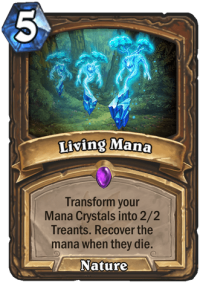
If the Druid is able to capture control of the board, Consecration and Equality can provide you with a reset button. The timing of the Consecration has become more important with the addition of Living Mana, however, as it gives Egg Druid an immediate refill after an on curve Consecration. Ideally, you want to play Consecration with something on your side of the board, after the Druid has dumped his or her hand, or in response to Living Mana.
Landing a Spikeridged Steed can end the game on the spot because they rely so heavily on minion damage and lack any form or removal.
Key Cards:
Hunter
Midrange Hunter: 54%
Again, nearly all variants of Hunter rely on minion pressure and, like Egg Druid, tend to buff their minions to generate threats. Board clears give you the opportunity to swing the board back in your favor, but Hunters do have several high-value threats and sticky Deathrattle minions that can make it hard to regain an advantage. 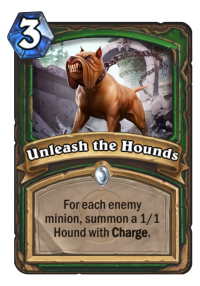
Be aware of overextending too far in this matchup as doing so can feed into a Scavenging Hyena + Unleash the Hounds combo. The inevitability of the Hunter hero power means you need to either apply counter pressure at some point or land a heal with Ragnaros, Lightlord.
Key Cards:
Mage
Freeze Mage: 30%
One of two truly abysmal matchups for Midrange Recruit Paladin, Freeze Mage is usually not terribly concerned with a board full of Silver Hand Recruits, buffed or not. Not only can the Mage stall out the board you spent the first five turns building, but the Recruits themselves can present a liability with Acolyte of Pain allowing the Mage to cycle efficiently in the matchup.
Your best chance in this matchup is to get out as much pressure as you can in early turns while the Mage is still focused on drawing cards and hope to finish the game before their Alexstrasza and burn is drawn to finish you off. Save Ragnaros, Lightlord for after Alexstrasza.
Key Cards:
Reno Mage: 59%
Surprisingly, this is a much better matchup. Unlike Freeze Mage, Reno variants tend to have fewer solutions to wide board states and rely on steady board pressure more than burst combos. As a result, you can likely get ahead early and continue snowballing your early minions to overwhelm the Mage and/or exhaust his or her means for dealing with your late game threats. 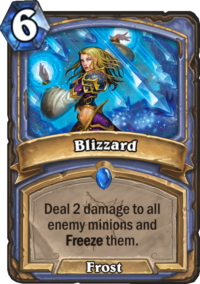
Key Cards:
Secret Mage: 53%
Secret Mage is slightly favored for the Recruit Paladin due to its lack of AoE spells. Knowing this, you can safely spread out on the board since, barring a Primordial Glyph discovery, the Mage is unlikely to have a response. Even if they do, Stand Against Darkness is likely to stick on the board unless the opponent has several minions in play.
The Mage does, however, have a handful of three health minions in the early game that are challenging to deal with, so safely navigating the early turns and finding a way to remove their first few turns worth of minions becomes critical. While Spellbender is less common in Wild lists, be weary of playing Spikeridged Steed with any untested Secrets in play as even running into a Counterspell can be crippling.
Key Cards:
Paladin
Secret Paladin: 47%
The Secret Paladin has a playstyle and similar tools to your deck, so this matchup is nearly a mirror. That said, the uncertainty of Secrets played in the early game can cause havoc, so always be aware of which Secret is going to disrupt your plans the most (hint: it’s often Avenge). 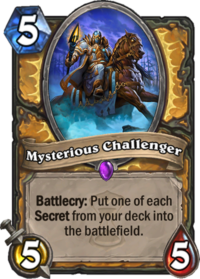
A Mysterious Challenger on turn six can be devastating, especially from behind, making this a slightly negative matchup. Try to wrestle your way into a favorable position and take advantage of the fact that you have more board refills than your opponent.
Key Cards:
Priest
Combo Priest: 59%
Inner Fire Combo Priests try to stick a minion on board, give it a bunch of health, then hit your in the face with it. Equality absolutely cripples the second step in this plan, giving you a good matchup here. Truesilver Champion can chop away at anything that isn’t a Deathlord, preventing the buffs from landing in the first place.
Your early game minions here are less threatening, but landing a Poisonous Adapt on your Recruits may efficiently eliminate potential buff targets as well. If you can keep their side of the board clear, your late game threats will take over the game. 
Key Cards:
Dragon Priest: 57%
Most Dragon Priests also rely on their high-health minions to maintain a steady slew of minion pressure. This is the unusual matchup where your early game plays are less effective due to the three or more health on every minion in their deck. Fortunately, Equality (with or without Consecration) can do a lot to respond as well as give you the chance to swing things back in your favor.
Since the deck doesn’t run much burst damage and typically tops out at Drakonid Operative, you have the opportunity to be patient as to when you pull the trigger on Equality. Try to eek out as much value from the card as possible and don’t send too many minions out to the slaughter before you do.
Key Cards:
Rogue
Miracle Rogue: 60%
Consistent pressure is the name of the game against Miracle Rogue. Aside from Fan of Knives, the Rogue has few options for handling a flood of minions, so use that to your advantage. But do be hesitant with your Muster for Battle and Stand Against Darkness, as Fan negates them both entirely. 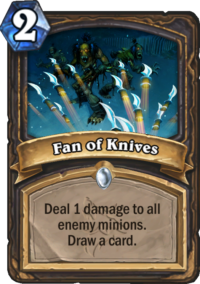
Again, Equality can come up big here since the deck relies on Concealing high-value threats and massive burst turns. Spikeridged Steed can put up an important roadblock since so many Rogues are swapping Sap for Vilespine Slayer.
Key Cards:
Shaman
Aggro Shaman: 56%
Aggro Shaman is a moderately favorable matchup but does pose some issues because of the potential for Maelstrom Portal. Portal removes your recruits and the Shaman’s high-health minions in the early game can stick for several turns.
Here, Truesilver Champion can help chop down minions with three or four health and protect a board full of recruits in the event that your opponent doesn’t have Portal. Devolve is becoming more common, so you may not be able to rely on Spikeridged Steed alone to stabilize your position on the board.
Key Cards:
Control Shaman: 40%
Like Freeze Mage, Control Shaman has a lot of tools to disrupt the synergy and playstyle of the Midrange Recruit Paladin. Notably, the sheer number of AoE spells makes it hard to keep anything on board and, even if you do, there is no way around the wall of taunts. Worse yet, Devolve wrecks your Recruit synergies and Hex can efficiently clear your valuable late game minions.
The only positive here is that Equality interferes with their win condition a lot more than yours, but often it’s not enough. Attempt to apply as much pressure as you can in the early game and hope the Shaman is forced to Overload himself or herself out of the game. 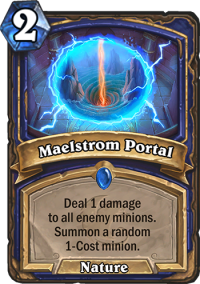
Key Cards:
Token Shaman: 51%
As spillover from the Standard scene, Token Shaman is a bit of a surprise in the Wild meta since it gains no tools for the additional sets in the format. That said, it is still effective and provides a fairly even matchup for Recruit Paladin.
The Shaman’s strategy is similar to yours: flood the board and snowball to victory, but the potential for a burst from Bloodlust after turn five is something to be aware of. Consecration alone can remove token minions, but playing it on curve doesn’t often accomplish much if it gives initiative back to the opponent. Keep control on the board and avoid extending into Maelstrom Portal and your opponent will have few options.
Key Cards:
Warlock
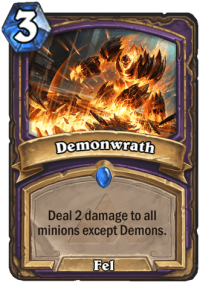
Reno Warlock: 53%
Another surprisingly positive matchup considering the Reno Warlock has a near-infinite amount of board clears. Despite this, the Paladin has the ability to refill and apply continuous pressure, which makes it difficult for the Warlock to swing the game back into their favor.
Again, persistent pressure is key here, as is understanding which turns AoE spells are playable for the Warlock.
Key Cards:
Warrior
Control Warrior: 68%
Both taunt and generic Control Warrior play out the same way and have similar matchup spreads, so they will be considered together. Fortunately, both decks tend to be slow, giving you time to set up your onslaught of minions.
This game will be yours to win if you avoid Whirlwind effects on your Silver Hand Recruits as much as you can, and you don’t extend too far into Brawl without a refill mechanic. 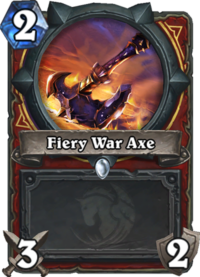
Key Cards:
Pirate Warrior: 54%
The first four turns against Pirate Warrior are nerve-racking for any deck. As the Recruit Paladin, if you can make it through the early onslaught alive, you have a good chance of turning things around. Spikeridged Steed is important, but Pirate Warriors commonly include Spellbreaker, so don’t rely solely on it sticking.
Wickerflame Burnbristle can do a lot to interrupt your opponent’s face attacks while bringing your life total back up a bit. Along with Ship's Cannon, the Pirate Warrior’s turn three minions are critical, all of which can be handled by Truesilver Champion.
Key Cards:
Wild Midrange Recruit Paladin Card Substitutions
Due to the sheer number of valuable class Legendary cards, Paladin decks tend to weigh heavily on the wallet and Midrange Recruit Paladin is not any different. Tirion Fordring is crucial in just about any non-aggro Paladin deck and, as such, does not have a direct replacement. The additional of Sunkeeper Tarim in Journey to Un’goro added another legendary whose synergy with the Silver Hand Recruits and overall value makes it a requirement in the list.
In addition to more budget-friendly options, potential tech choices and flex spots are listed in the card substitutions section. As noted when discussing the different variants of the deck, players have been having success with a multitude of lists, with varying preferences given to certain cards. As a relative newcomer to the Wild meta, the most optimal deck list is still being worked out, but the power of the archetype as a whole cannot be denied.
Common
- Haunted Creeper: In terms of general value, Haunted Creeper provides more to this deck than just about all other two-drop (the exception being Shielded Minibot) minions due to its stickiness and synergy with Steward of Darkshire. That said, Golakka Crawler is a good option when facing the numerous aggro decks that run Pirates. Likewise, Hydrologist is another great two mana minion that can be argued belongs in this slot, especially when paired with The Curator.
- Stand Against Darkness: This card is a polarizing enough to warrant consideration for replacement, even as a common. It provides a recovery from opposing board clears and produces absurd value in conjunction with Steward of Darkshire, Lightfused Stegodon, Quartermaster, or Sunkeeper Tarim. However, when you’re behind, it’s often not enough on it’s own to change anything and when you’re ahead, your board might be too full to even play it. One copy could be swapped out in place of Loatheb or Justicar Trueheart. Both copies in favor of more flexible plays, such as Keeper of Uldaman or Sludge Belcher, depending on the variant of the deck you choose.
Rare
- Steward of Darkshire: This card is useful in protecting your Silver Hand Recruits long enough to land a key buff or Adapt, but not critical to the deck’s success. Similar to other low-cost cards in the list, it can be replaced with Hydrologist, Golakka Crawler, or Zombie Chow.
- Spikeridged Steed: Another powerful tool courtesy of Journey to Un’Goro, Spikeridged Steed doesn’t directly synergize with the Silver Hand Recruits, but the style of deck makes it highly likely that there will be a minion on the board by turn six. Sludge Belcher does provide a similar, but less effective means of blocking opposing minions, without the requirement of having something in play.
Epic
- Quartermaster: The only Epic in the deck and original Recruit synergy card, Quartermaster is great when you can give a few Dudes two arms. His value is so heavily reliant on a board of recruits makes him a bit replaceable, however. Swapping one of the two Quartermasters in the list with Loatheb may just be better in general. A pair of Azure Drakes or Sludge Belchers can also fill in the curve and make for quality turn five plays on their own.
Legendary
- Wickerflame Burnbristle: Despite the fact that he does so much to halt early game pressure, Wickerflame is probably the most replaceable of the four Paladin class legendaries. In his stead, Zombie Chow can do a lot to stave off aggressive decks’ early turns and fill the void left by the red-headed dwarf.
- Ragnaros, Lightlord: Good Guy Rag is the main source of healing in this deck and helps recover and stabilize against decks that outpace you in the early game. Without him, you can probably survive, albeit less often. Dr. Boom provides a more aggressive threat and has synergy with Steward of Darkshire. Lay on Hands provides similar recovery along with card draw, something this deck is lacking.
About the Author
A card game veteran, Roffle has been infatuated with Hearthstone since closed beta. These days, he spends most of his time climbing the Wild legend ladder. Roffle has a wealth of experience in Wild Hearthstone, consistently maintaining high ranks on ladder since the format’s inception along with a top 16 finish in the inaugural Wild Open Tournament. Follow him on Twitter or catch him on Twitch for an occasional stream.

















/rating_1_half.png)
/rating_2_off.png)
Hi, I think rallying blade is a lot better than truesilver in this deck. I would also have 2 Crystal lions as that can make for some crippling swing turns . Take out tirion and rag lightlord. Take out hydrologists and Creepers and add 2 2/1 charge pirates and patches. Also add in 2 divine favors and take out a Spike ridge. This creates a lot better tempo deck that has potential to kill people turn 5 and I have won games on turns 15-20 bacause they cant deal with all my guys. Also, a 3 mana draw 5/6 cards is just broken
Hi Roffle, really like that deck, i’m sure with KFT and now KAC it can become first tier, any chance to get an updated list ?
He’s the list I was running at the beginning of the expansion. Still performed quite well.
http://www.hearthstonetopdecks.com/decks/roffles-kobolds-and-catacombs-midrange-recruit-paladin/
Way too slow after Rank 5.
I think you should update this list for KFT. Righteous protecter, Bonemare and Bolvar are all pretty good in this deck.
Hey Roffle, really loving the deck man. Made rank 10 from 25 in a couple of hours but just wondering since KOFT is here, what new cards might have a place in the deck? Cheers and thanks again!
I’m saving up for Sunkeeper, any suggestions for what to use until I craft it?
Thanks for a great guide!
My goodness, your write-ups are amazing! How long does it take you?
Thank you! I don’t normally keep track of the time it takes. However, when it’s a deck I’m quite familiar with, it doesn’t take me too long to get my experiences on the page.
What about bran bronzebeard? If I can find room thinking about taking out darkshire as well.
Brann is an interesting consideration. He’d certainly provide some massive swing turns with Quartermaster and/or Lightfused Stegodon as well as some value with Stonehill Defender. My concern is that he’s a little slow for the pace of the current Wild Meta. While potentially powerful, I’m not sure he’s necessary (but willing to be proven wrong).
As you mentioned, the list is a little tight but swapping out a Steward of Darkshire seems fine. Give it a shot and let me know how it works for you!
With the darkshire councilman and recruit shenanigan.. why not add rallying blade instead of truesilver? and add atleast 1 vinecleaver?? i just switched to rallying blade, but played too less matches yet to come to a conclusion which one is better..
is the healing that important from the truesilver?
imo vinecleaver can turn a game around in your favour, on turn8 you can play the councilman for the divine shields, and you can defend the councilman with the weapon..
I think Rallying Blade potentially has a home in this deck with all the Divine Shield minions, depending on matchups. It’s certainly worth testing, but might create some clunky hands because you often want to play Muster for Battle on turn three.
Vinecleaver can definitely turn games around for you, but there is also the possibility that with another card in hand you wouldn’t have gotten behind to begin with. At certain ranks, the Wild Meta is quite fast, so keeping up is critical.
The reason you find Truesilver Champion in Wild variants so frequently is the need to remove high-value four health minions, such as Frothing Berserkers, Bloodsail Cultist, Totem Golem, and Imp Gang Boss.
This list is great!! It is very strong and really fun to play.
I don’t care about ranking and win-rates and I never play more then a few matches with the same deck but yesterday I went in a win streak from rank 13 to rank 7 and I enjoyed all the games!!
Thanks Roffle, I will try the other decklists you have brought here and, if they are on the same level of this one, it will be awesome!!
Thanks mate!!
You’re welcome and thank you for the kind words! That’s a pretty impressive win streak you had there!
The Midrange Paladin archetype in particular is probably the strongest deck in Wild at the moment, so while the other decks might not be quite as good, they are certainly capable of doing well. And they’re equally fun to play!
I’m still playing this deck XD
On rank 5 I made a couple of changes:
-2 haunted creeper -> I think this minion does not fit in this deck.
-2 steward of darkshire -> I’m a bit uncertain about this one. Giving divine shield to 5 recruits is great, but too many times I feel this card is a dead one in my hand.
+2 hydrologist -> discover a secret is really useful, helped me to win a few games.
+1 justicar trueheart -> great with all this recruit buffs. And giving her spikeridged steed is awesome!!
+1 dr. boom -> I still think this is the best 7 mana minion.
Any thoughts on these changes?
Glad to hear it’s still working out for you! I think those changes look pretty good depending on the matchups you’re running into.
Both Justicar and Boom fit well in the deck and the second 2-drop minion is often a matter of preference. A case could be made for Haunted Creeper, Golakka Crawler, and Hydrologist in this spot. With the removal of Steward of Darkshire, which (as you noted) is not a good card on its own, Haunted Creeper loses a lot of value.
Thanks for your reply and your opinions.
Cheers!!